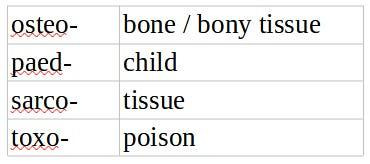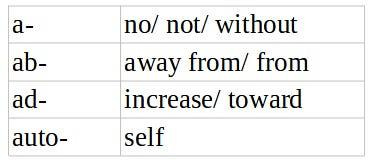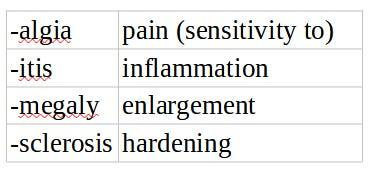CQRG's Winter Medical Terminology Boot Camp
DAY 2 / MEDICAL TERMS: CONVENTIONS, PREFIXES, & SUFFIXES
Welcome!
If you are new to the site we invite you to browse our materials and program activities. Simply click on the tabs above to view the activities and reference materials. All of the medical terminology program lessons will be posted on a daily basis in the NOTES section. This program started yesterday (Monday, December 23, 2024) and concludes on Wednesday, January 1, 2025. Subscribe to receive program updates and monthly study guides emailed directly to you for free.
About The Winter 24-25 Program
Our program is student-centric. You learn what you want, when you want. As little, or as much as YOU want. Each lesson will build on the previous one. If you don’t have time for a lesson, you can miss one and pick up with another.
Every lesson is designed to be a stand-alone study guide.
Medical Terminology Word Parts, Prefixes, & Suffixes
Learning Objectives:
This lesson is designed to introduce learners to the key components of common medical terms.
Building Useful Terminology
Medical words are typically comprised of a root word and a prefix and/or suffix.
A combining vowel may also be used.
Getting to Know the Key Parts
Medical terms are constructed from word parts.
These include:
Root words
Prefixes
Suffixes, and sometimes:
Combining Vowels.
Definitions
Root word
Foundational term or word part
Combining form
This is a root word with a combining vowel
Prefix
Word part at the beginning of a term that affects meaning
Suffix
Word part at the ending of a term that affects or changes meaning
These definitions are very important. Learners may wish to jot these down and review them at least once more.
Example:
We break the medical term into parts to unlock its meaning:
*tachycardia is a medical term we use to describe a faster than normal heart rate.
Examples of Some Common Medical Terminology Root Words
Examples of Some Common Medical Terminology Prefixes
Examples of Some Common Medical Terminology Suffixes
The “Rules”
Getting to know these conventions will help simplify things.
When combining two combining forms, the combining form vowel is kept
When combining a combining form with a suffix that begins with a consonant, keep the combining form vowel
When combining a combining form with a suffix that starts with a vowel, then we drop the combining form vowel
Prefixes are used at the beginning of medical terms and no combining form vowel will be used
(For greater clarification, refer to the recommended textbook reading; see chapters listed below).
Recommended Reading (Optional)
Textbook
Medical Terminology for Healthcare Professions, Katherine Greene and Andrea Nelson
Read Chapter 1
Review Rules for Building Terms
Read Chapter 2
Review Prefixes, Suffixes
This text is available for free online. You may download a PDF copy or browse it at the website.
Learning Guide Supplement
Analysis & Application
*Read through your lesson notes if you took them. Keep the following questions in mind about your ability to recall and use the information learned today.
Remembering Level:
Can you recall what you learned in lecture, read in your text?
You can recall, define, list, repeat, or state
Understanding Level:
Can you explain the concepts you read or were taught?
You can discuss, explain, paraphrase, or select
Applying Level:
Can you use the information in a new way?
You can choose, demonstrate, employ, interpret, solve, etc
Analysis Level:
Can you distinguish between different points, parts, topics?
You can compare, contrast, distinguish, question, test, etc
Evaluating Level:
Can you justify a particular stance or decision?
You can appraise, defend, support, value, etc
Creating Level:
Can you produce content, or possibly a product?
Create, develop, design, write, etc
Study Tips For Higher Level Learning
Active learning involves activities that engage students in the learning process. While passive learning focuses on reading text, taking notes and listening to lectures; active learning seeks to involve the student as a direct participant.
While both styles are important, students who are actively engaged in their own learning process are more likely to recall and use information.
Simple steps to achieve active learning:
Attend Zoom Review Session meetings
Discuss topics with a friend after lessons
Create your own practice questions
Resources:
The language of medicine, Henrik R Wulff, MD (2004)
https://www.ncbi.nlm.nih.gov/pmc/articles/PMC1079361/
Images, open source text book as previously noted and photos via Unsplash gallery













